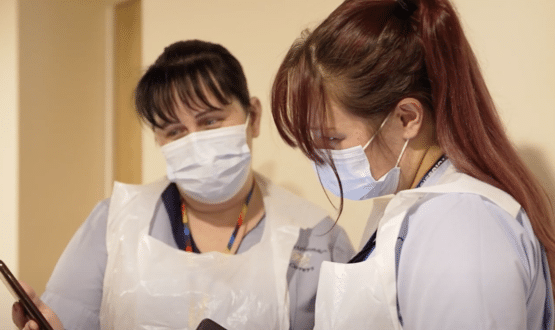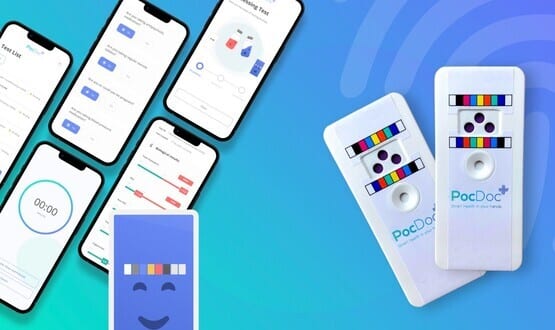The hunt is on
- 21 August 2013

So, what makes a trust an EPR exemplar? Participants in an EHI tweetchat this week had some trenchant ideas.
“I think that to be meaningful it’s gotta be big,” wrote @byrnea, otherwise known as Adrian Byrne, the director of IM&T at Southampton University Hospitals NHS Trust. “You know about them!”
But others felt that rather different criteria should be applied: “Agile, user centred design involving healthcare professionals and the patient is key,” suggested @Woodcote Ewan, otherwise known as consultant and apps enthusiast Ewan Davis.
While @OsmanBHatti argued that “whatever is decided, patient date should be highly controlled and protected. Patients should know what is happening with data.”
From what is an EPR to who has one?
The Hunt for EPR Exemplars is the next stage in The Big EPR Debate that EHI launched in April. The original debate was a response to health secretary Jeremy Hunt’s call for the NHS to adopt electronic records by 2015 and to go ‘paperless’ by 2018.
Hunt failed to define these terms, and his initial speech to the Policy Exchange think-tank was backed only by a rushed-looking paper from KPMG.
This made wild claims about the amount of money the NHS could save by adopting a rag-bag of IT projects from finishing NPfIT to going ‘digital first.’
And this raised concerns that, after all the trauma of the NPfIT years, the NHS would lose sight of the goal of a fully integrated EPR, in which clinical users could record data once for use many times.
In The Big EPR Debate, EHI asked readers what they thought the key elements of an EPR should be, and where trusts should focus their efforts, given their different starting points.
The debate had a significant influence on the guidance that NHS England put out in July on how trusts should apply to the £260m Technology Fund that was announced in May.
This invited applications for projects to promote the use of the NHS Number, introduce e-prescribing and scheduling, and share information across healthcare communities.
However, the debate also uncovered a desire among IT managers and clinicians to learn from the best.
The Hunt for EPR Exemplars takes this forward by asking readers which UK hospitals have made the greatest strides in not just introducing EPR technologies, but using them to improve patient care.
Specifically, EHI is looking for trusts that have good IT overall, but which are particularly known for their work in key areas, such as e-prescribing and scheduling, and from which others can learn.
What’s vital, and when will acutes get it?
Perhaps predictably the ‘hunt’ has gone over some old ground. Just as the tweet chat rapidly got into a debate about how to develop an EPR, comments on the EHI website have revisited the issue of how to define one.
Bill Aylward, the consultant at Moorfields Eye Hospital who has been heavily involved in the development of its OpenEyes open source EPR, argued that it is “a system which allows clinicians to work without the use of paper notes.”
So a simple test for whether a trust should be regarded as an EPR examplar is whether “paper files are still being retrieved for clinics/wards, added to, and filed.”
Commenter jwaktare, who as Johan Waktare writes EHI’s ‘From the Heart and Chest’ column agreed. His trust – Liverpool Heart and Chest – has just gone live with an Allscripts EPR that means it now has “no paper notes and only minimal continuity folders for residual paper generation.”
“Would it be contentious to suggest that having paper-based records is incompatible with an exemplar EPR development?” he asked.
Well, it’s an idea; but it’s a very high bar. A lot of trusts that have spent a lot of time and money investing in patient administration and clinical systems would not get over it.
And let’s face it, one reason for that is that some of the document management and mobile technologies that effectively deal with legacy paper and bedside access are relatively new.
Still, @CompareSoftware, otherwise known as Joe McDonald, chair of EHI’s CCIO Leaders Network advisory group, both tweeted and commented that his trust – North of Tyne and Wear NHS Foundation Trust – had been “paperless since 2011, wireless and mobile since 2012.”
He even added a hashtag – #twiddlingourthumbstill2018 – to ask what trusts like his were supposed to do while others – mostly in the acute sector – caught up.
Meanwhile, @mark_magrath pointed out that Basildon and Thurrock General Hospitals NHS Trust has done terrific work on document management, but doesn’t have e-prescribing in place. “Can you be #epr exemplar if you aren’t?” he asked.
Names in the frame
It’s a good question. To get the hunt rolling, EHI suggested a list of five trusts that might be in the running to be exemplars: King’s College; Heart of England; Newcastle Upon Tyne; Royal Liverpool and Broadgreen; and University Hospital Birmingham.
All of these score well on a new Digital Clinical Maturity Index that EHI’s research arm, EHI Intelligence, has been developing, and that will be launched this autumn. And all of them are known for their work in one or more of the key areas of e-prescribing, nursing observations, and scheduling.
Back on the EHI website, a number of commenters suggested further trusts that, while they might not be as paperless or mobile as Johan and Joe’s, might still be regarded as exemplars.
Wirral University Teaching Hospital NHS Foundation Trust received a couple of mentions, with commenter Outspoken arguing that it “implemented EPR years ago” and set a “benchmark” for the functionality developed.
Commenter PeteMarsh agreed, adding that Wirral was not just a pioneer, but has gone on to update its PCIS EPR by replacing its modules and functionality with Cerner updates over a number of years.
He said it has also been developing “clinical data warehousing” that is “second to none” and opening up various services to GPs.
In a similar vein, alexgeddes suggested that “it will be worth looking to Chelsea and Westminster Hospital in London”, which developed the IDX system that LPfIT initially purchased, and have gone on to extend it over 20 years.
“There is not much that it does not do for staff and patients in health care treatment and in patient and social service support,” he wrote, ahead of a long-list of the departments and functions that it supported.
Bramcoteboy suggested that “University Hospitals Coventry and Warwickshire” has been “quietly developing its own, in-house system” – CRRS – and “believes that it is an exemplar for closed loop results acknowledgement.”
From systems to outcomes
Another trust to come up is @byrnea’s; Southampton University Hospitals. In a comment responding to this, Byrne raised the issue of whether it mattered how a trust went about becoming an exemplar, given that different routes – from buying core systems from a single supplier to pursing a ‘best of breed’ strategy – are available.
“There is more than one way to skin a cat,” he wrote, in relation to EHI’s list. “You have big buy (Newcastle), big build (Birmingham), different approach through scheduling (Heart of England and possibly Liverpool) and King’s, which of the bunch is the most similar to Southampton.
“We have taken the view that an all-in-one EPR has many advantages that are outweighed by disadvantages for where we are right now.” Trust would take different approaches, he argued, depending on the maturity of their systems, and their technical ability.
Southampton itself has opted to retain its “solid” PAS (eCaMIS), to add an interface engine (Ensemble), a suite of Ascribe clinical systems, JAC e-prescribing, links to the community through the Hampshire Health Record, and a patient portal built on HealthVault.
Still, other commenters felt that the entire debate was too focused on systems and on how to implement them. “It is clinical outcomes not technology that should determine who the exemplars are,” wrote commenter Outspoken.
“It is never easy to implement an EPR, but if IT have driven it, I would argue it isn’t necessarily achieving the clinical outcomes that it would have if the clinicians were in the driving seat.”
Outspoken argued that the functionality a trust had implemented should be cross-checked with the outcomes it had achieved to decide whether it should be an examplar.
“If we are striving for safety for patients, then we must have clinical outcomes and metrics that can be measured and that determine how successful the EPR is in making changes to the clinician’s working practice and, more importantly, to the patient,” he or she added.
That would be great; but particularly hard to do. Challenged on how to do it, another commenter, @MatSilk argued that it should be “clinicians working for the organisation” who should put forward nominations for exemplar status, so they came “from the horse’s mouth.”
Take part in the debate
It’s another interesting idea. But The Hunt for EPR Exemplars remains open to everybody interested in healthcare IT; suppliers, managers, clinicians, users and patients.
What does make an EPR exemplar; can good work in one area count, is e-prescribing a requirement, is paperlessness essential, or should a whole new set of clinical outcome metrics be developed before asking the question?
And, importantly, which trusts do you think should be exemplars and why? The comment button awaits…




